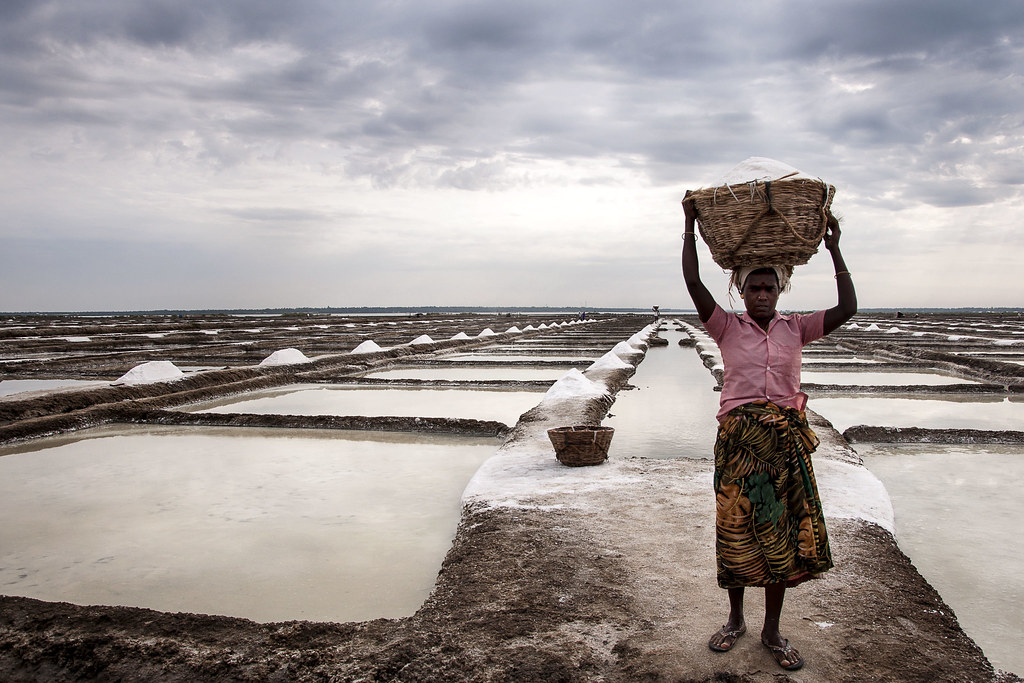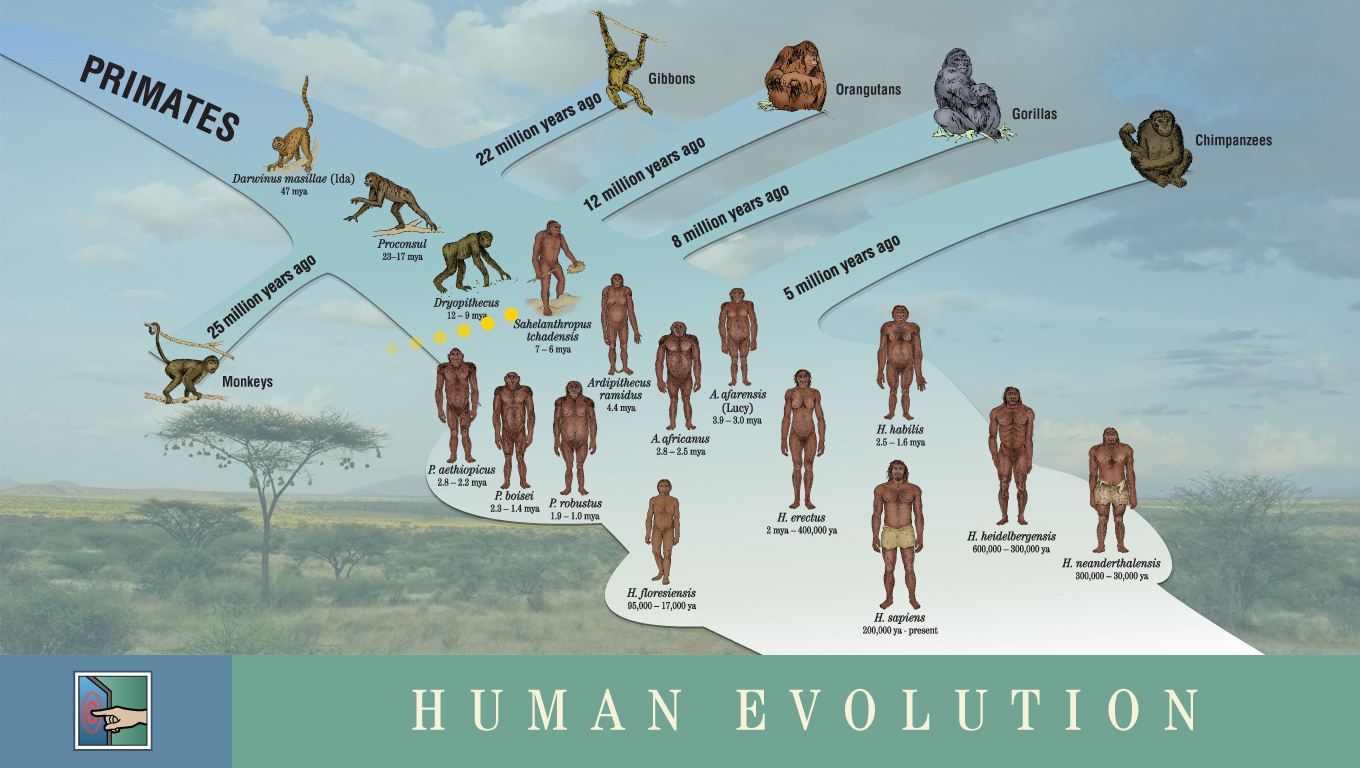Tamil cuisine recognizes six tastes—sweet, sour, salty, bitter, pungent and astringent and Salty is one among the six tastes. It brings the best out of food . As the most essential ingredient, it can transform the character in our dish. In Tamil tradition salt is being represented as food and considered as icon for sensitiveness, loyalty and gratitude. In Persian / Urdu, the word 'halal' means righteous i.e., characterized by accepted standards of morality or justice; 'haram' means just the opposite, 'something that is morally reprehensible.' 'Namak-halal' means loyalist and 'Namak-haram' means disloyalty by virtue of subversive behavior. In Madras Regimental Center (MRC) (An Indian Army Regiment) the recruits (a.k.a “Thambis”), during their attestation parade, used to take the oath of enlistment or salt-oath after eating a pinch of salt and by placing their hands on copies of the Bible, Koran, and the Bhagawad Gita wrapped in Tricolor. This tradition is being observed since from the inception of MRC.
| Madras Regimental Center Willington Passing out Parade Cadets one Salt Oath |
Nothing is more essential to making food taste good than salt. Proper salting results in being able to taste the ingredients better, not the salt (சில்பத உணவு. Food added with salt. Perumpanatruppadai 64). Without salt the food will taste flat and excess salt the food tastes salty. By drawing moisture salt, a chemical agent, destroys bacteria and preserves food. Therefore it is known as a "primordial condiment," Tiruvalluvar has employed this example with the feigned dislike of a wife to her husband; sometimes of a husband to his wife:
உப்பமைந் தற்றால் புலவி அதுசிறிது
மிக்கற்றால் நீள விடல்.
Tiruvalluvar (திருக்குறள்) 1302:.
A little dislike is like salt in proportion; to prolong it a little is like salt a little too much.
Salt or common salt is "a white crystalline substance which gives seawater its characteristic taste." In the form of edible (table) salt it is popularly used as a condiment and food preservative. Salt is identified as an icon for friendship, hospitality, chastity, alliance, table fellowship, fidelity, fertility, blessing, curse and endurance, etc. "Salt has influenced human nutrition, health, politics, taxation, economy, freight, transport, and commerce throughout the ages. All human activities have been influenced by salt including economy, religious beliefs and practices, art, literature, psychoanalysis, superstitions, and exorcism."
 |
| Fish preserved using salt. PC: Wikimedia |
 |
| Pickles and Condiments Variety |
Etymology
The word 'salt' originated from Proto-Germanic word "salto." and from Old English word "sealtan." Since salt was once rare and important resource, few metaphoric uses such as worth one's salt (1830), salt of the earth (Old English, after Matthew v.13) reflect its value. The Bible contains no fewer than 24 references to this substance. In olden days, the Roman warriors serving the empire were paid with a handful of salt each day as salary. Hence it was known as 'salarium' (Latin) or salt-money. Over a period time the officers in charge found it difficult to preserve the huge bulk of salt from rain and the transport of the same was difficult. Therefore salt was replaced with money. Old Latin word 'Solidus'-- a Roman Gold coin and Medivial Latin 'soldarius'-- one working for pay. France also followed the concept of salt-money and paid the warriors with a special coin called 'sol', and the payment was known as 'solde' (also the payment of a sailor). Hence the French call their soldiers, 'soldat'. Old French 'Soudier.' Sambalam (சம்பளம்) is the Tamil word. Samba (சமபா) means paddy (நெல்) + Alam (அளம்) means salt pan and Sambalam (சம்பளம்) means paddy and salt paid as wage. The practice was followed when barter system was in vogue.
Sodium Chloride| Chemical bonding of the Na+ ion and the Cl- ion |
 |
| PC: Socratic |
Sodium chloride do not contain carbon and hydrogen together in one molecule and it has a molar mass of 58.44 grams per mole. The white colored chemical substance appears as a solid, clear crystal with little or no odor. It is hygroscopic and also dissolves well in water and the ions in the crystals will separate when in solution. It has the density of 2.165 g/cm³ and 800.8 °C as melting point and 1465 °C as boiling point. Its vapour pressure at 865 °C = 1 mm Hg and solubility is at 25 °C = 35.9 g/100 g water. The ocean has about 35 grams (1.2 oz) of solids per liter i.e., the salinity of 3.5%. The solid do not conduct electricity and the aqueous liquid solution conducts electricity. It do not have combustion properties. Sodium chloride molecules can also stack on top of each other in a structure known as a lattice and the solid crystals of sodium chloride will contain this lattice-type arrangement.
| Lattice Type Arrangement of Sodium Crystals |
Common salt is basically an electrolyte. Electrolytes are minerals that conduct electricity in our fluids and tissues. So basically our body really needs electrolytes, the main ones are sodium, chlorine, potassium, magnesium and calcium. Sodium is a vital nutrient. It’s a major component of extracellular fluid, and is essential for maintaining the volume of the plasma to allow adequate tissue perfusion and normal cellular metabolism. It keeps human body electrically conductive to maintain cell voltage for receiving or passing along information. Electrolyte prevents our cells from bursting too much water or from shrinking due to shortage of water. Common salt works fine as long as it contains sodium chloride, Human body lose salt by sweating and urinating and the salt intake (in our food) replaces the loss.
The daily human intake of salt is minimum. The minimum physiological requirement of sodium simply to sustain life has been estimated by World Health Organization to be 5000 mg (5 gm) of sodium per day (5 gm per day). American Heart Association (AHA) has an even more strict guideline of consuming less than 1,500 mg of sodium (3.8 gm of salt) a day for general health and disease prevention. "The average daily salt intake was 10.98 grams per day for Indians aged above 19 against the WHO recommendation of 5 gm,",Excess salt and sodium intake has been blamed for a variety of serious health conditions such as heart disease, hypertension, and stroke.
“Salt is so common, so easy to obtain, and so inexpensive that we have forgotten that from the beginning of civilization until about 100 years ago, salt was one of the most sought-after commodities in human history.”
Salt was in use long before recorded history and it has shaped civilization since Neolithic caveman. Since the dawn of time, early human hunter gatherers and hunters obtained their salt from eating animal meat and plant diet.
The nomadic traders used camels as the key means of trade-transport between the Mediterranean and West Africa and to cross the Sahara desert. They evaporated seawater from the Mediterranean Sea, Salt came from Libya, Tunisia, and Nubia. Trans-Saharan salt routes are heavily protected to keep the trade flourishing. "The amersal, or earth salt, is formed when the blazing sun heats a dry lake bed after July's sudden rains, drawing liquid to the surface where it is baked into a thick layer of salt mixed with sand. This can be refined for human consumption or is more commonly fed to livestock for its rich mineral content."
The daily human intake of salt is minimum. The minimum physiological requirement of sodium simply to sustain life has been estimated by World Health Organization to be 5000 mg (5 gm) of sodium per day (5 gm per day). American Heart Association (AHA) has an even more strict guideline of consuming less than 1,500 mg of sodium (3.8 gm of salt) a day for general health and disease prevention. "The average daily salt intake was 10.98 grams per day for Indians aged above 19 against the WHO recommendation of 5 gm,",Excess salt and sodium intake has been blamed for a variety of serious health conditions such as heart disease, hypertension, and stroke.
World History of Salt
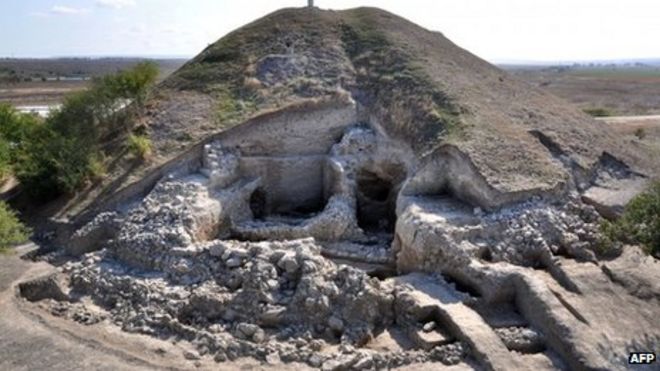 |
| PC: Bulgarian National Institute of Archaeology |
“Salt is so common, so easy to obtain, and so inexpensive that we have forgotten that from the beginning of civilization until about 100 years ago, salt was one of the most sought-after commodities in human history.”
| Neolithic Age people |
Salt was harvested thousands of years ago. Archaeologists in Bulgaria discovered the walled fortified settlement near the modern town of Provadia in north-east Bulgaria dating back to around 6050 B.C. That was well before the commencement of ancient Greek civilization. The excavation at this site commenced in 2005. The ancestors of this site boiled water fetched from a local spring and used it to produce salt bricks to preserve meat and they even traded salt, Almost all major ancient civilizations viewed salt as a precious commodity. In Tuzla, an ancient town inhabited continuously for more than 6,000 years, in Bonsia extensive salt deposits were found underneath the city. The name "Tuzla" is the Ottoman Turkish word for salt mine, Salt was first extracted in a salt mine Salina Turda located in the Durgau-Valea Sarata area of Turda, in Cluj County, Romania. The mine first mentioned in 1075, continuously produced table salt from the Middle Ages.
 |
| Tuzla mine Tuzlaite, NaCaB5O8(OH)2·3H2O |
Chinese Yellow Emperor Huangdi (a.k.a Yellow Thearch), third of ancient China's mythological emperors, may be credited with for presiding over the first war ever fought over salt.
Yuncheng Salt Lake, located in the southwest of Yuncheng city and the largest lake in Shanxi Province, has 4000 years salt production history. Chinese slaves and even the entire villagers harvested salt crystals from the surface of the lake. Assyrians commenced the "tactics of salting the earth" as a military tactic to destroy enemy farmlands.
The civilization of Ancient Egypt, usually held to have begun around 3000 B.C when the lower Nile Valley became unified under a single ruler, was one of the earliest in world history. Egyptians may have been the first civilization to preserve fish and meat with salt. Egyptians also commenced exporting salt fish to the Phoenicians in exchange for expensive luxuries. They have found a kind of salt in an area called 'Natrun,' which referred to it as "the divine salt" or "Natron." It was not entirely composed of sodium chloride. Natron, harvested directly as a salt mixture from dry lake beds in ancient Egypt, was used for mummification processes. The salt absorbs water and behaves as a drying agent. Egyptians also used pure salt (sodium chloride) to preserve birds and fish and made them as funereal offerings in ancient Egyptian tombs.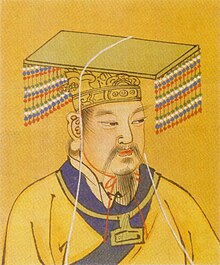 |
| Chinese Yellow Emperor Huangdi |
 |
| Wrapped Natron Salt Offering (Wikimedia) |
| Trans-Saharan Salt Route |
 |
| Hallstatt Salt Mine, Austria PC: Wikipedia |
Hallstatt (meaning "salt town"), a village in the Salzkammergut, on the western shore of the Hallstätter, a region in Austria, is known for its production of salt, dating back to 800–450 B.C. Hallstatt culture is usually linked to Celtic culture and the early European Celts of Hallstatt begin mining salt. In German "salz" means "salt" and the country's towns like Salzburg, Hallstatt, and Hallein located on the banks of Salzach river derived their names with salt.
From Chinese written records dating back to 800 B.C. we learn about salt extraction by the people of China using clay jars. They filled the jars with ocean water and boiled away to evaporate the water and collected the salt crystals left with in the jars. Later during 700 - 600 B.C. (the Eastern Chou dynasty) they used iron pans instead of clay jars to boil water for salt and they saved the fuel usage considerably.
During 500 B.C. Hallstatt Celts adopted to open salt pans on the sea-shore to produce salt. The method of evaporation to produce salt was followed during 500 B.C. by Etruscans in Italy, and the early Romans, and the Carthaginians in North Africa. .
The Roman Empire is considered as one of the greatest civilizations in history. It was founded in Rome in 753 B.C. The Roman Empire included most of what would now be considered as Western Europe, stretching from the Rhine River to Egypt and from Britain to Asia Minor. This timeline highlights the major events in the history of Ancient Rome. The history of Roman civilization goes from 753 BC to 27 BC and then from 64 AD to 1453 AD. The salt was mined by Romans from deposits in the ground. The mined salt was dissolved in water to get brine solution. They used uncovered salt pans (Roman name 'Salina') to boil the brine water to obtain salt. To form salt crystal, they used blood as coagulating (binding) agent. Roman salt pans were discovered in Algarve, Portugal.
The Roman Republic and Empire cautiously exercised control over the price of salt and they intentionally escalated salt price to raise money for wars. The Via Salaria was an ancient Roman road in Italy leading from Rome to the Adriatic Sea. The Latin word Via Salaria means salt. It was one of many ancient salt roads in Europe. In this route Sabines came to fetch salt from the marshes at the mouth of the river Tiber. So it was known as "Sabine Trail." The word "Salary" originated from the Latin word "Salarium," and it has the root sal, or "salt." In ancient Roman empire, it is specifically meant as the amount of money allotted to a Roman soldier to buy salt. Salt was an expensive, yet essential, commodity. The word "salad" comes from the French salade of the same meaning, from the Latin salata (salty), from sal (salt). Romans boiled vegetables with water, drained, blanched, and seasoned with pepper, salt, olive oil and lemon juice. Collumella, a Roman writer wrote about ancient Roman salad, which also reflect the richness of the land. These salads were known for their abundant varieties.
Indian Salt History
Salt is known since pre-Vedic times and is certainly as ancient as human civilization. Sushruta , an ancient Indian physician known for his Sanskrit treatise the Compendium of Sushruta (Sushruta-saṃhita) (600 B.C.), mentions four kinds of salt: rock salt, sea salt, lake salt and earth salt. Saindhava lavana (aka Sendha Namak in Ayurveda) is naturally occurring mineral form and isometric crystals of Sodium Chloride. It is best known today as the "Himalayan Pink rock salt." The word “Saindhava” means the ancient Sindhu Kingdom cited in the Indian epic "The Mahabharata." “Lavana” means “salt”. So Saindhava Lavana means salt that comes from the region of the Indus river valley. The Sindhu kingdom was located in the Indus river valley in modern day Pakistan.
The famous Khewra Salt Mine, one of the primary sources of Saindhava Lavana, is located in the foothills at the head of the valley beside one of the tributaries of the Indus. Black salt or Kala Namak is also a type of rock salt, which it contains sulfur content in addition to sodium chloride.
Salt Range, the series of hills and low mountains between the valleys of the Indus and Jhelum rivers, lies between the Indus River and the Himalayan Range in the north of what is Pakistan today. Salt range extends approximately 186 miles (300 km) long from east to west, and from 5 to 19 miles in width, in the central and eastern parts and its average height is 2,200 feet. In addition to the common salt, the Salt Range also contains coal, gypsum, and other minerals. Thousands of years ago Indians mined salt in Salt Range.
The Indian Salt Industry was an ancient industry. The tax was levied on salt in India since the earliest times and has always been a subject of criticism. Kautilya's Arthashastra, ancient Indian treatise on statecraft, economic policy and military strategy, provides a short account on salt manufacturing process. The salt extraction activity was supervised by "Lavanadhyakasa," an official representing the state during Mauryan empire. Solar evaporation of sea water was carried out in salt pans in coastal regions. The state maintained a system license for manufacturing salt for the fixed fee or tax during this period. During Pallava reign in South India salt industry was monopolized by the state. The Chola emperors in Tamil Nadu showed keen interest in the development of salt industry and encouraged taxation for salt. Hence number of salt pans situated along the eastern coast are referred to in Chola and later Pandya inscriptions. Large quantities of salts were transported through ancient highways.
Salt was produced in the coastal regions of Bengal, Bombay, Rann of Kutch and in inland regions of Rajasthan, Uttar Pradesh and Central India. The British East India Company greatly showed interest in escalating salt tax. In 1835, East India Company imposed special taxes on Indian salt to facilitate its import. Special Taxation paid huge dividends for the traders of the British East India Company. Heavy taxation on salt continued even after the Crown took over the administration of India from the Company in 1858. The Indian public vehemently condemned the stringent salt taxes imposed by the British. The first session of the Indian National Congress held in Bombay in 1885 raised the issue of the salt tax. Number of protests were observed in several parts of the country during 19th and early 20th centuries and this resulted in Mahatma Gandhi's Salt Satyagraha in 1930. Similar Satyagrahas were held in other parts of the country.
India ranks third among the Salt producing countries in the world after China and USA. The salt industry in India has shown remarkable growth and achievement during the last 60 years. At the time of our independence in 1947 we imported salt from the United Kingdom and Adens and now the country has not only achieved self-sufficiency in production of salt to meet its domestic requirement but also in a position of exporting surplus salt to foreign countries. There are about 11799 salt manufacturers engaged in production of Common salt in an extent of about 6.09 lakh acres in the Country. Gujarat contributes 76.7 per cent to the total production, followed by Tamil Nadu (11.16 %) and Rajasthan (9.86%). In Tamil Nadu, salt is produced primarily in the three districts of Nagapattinam, Tuticorin and Marakkanam in Villupuram.
The Roman Empire is considered as one of the greatest civilizations in history. It was founded in Rome in 753 B.C. The Roman Empire included most of what would now be considered as Western Europe, stretching from the Rhine River to Egypt and from Britain to Asia Minor. This timeline highlights the major events in the history of Ancient Rome. The history of Roman civilization goes from 753 BC to 27 BC and then from 64 AD to 1453 AD. The salt was mined by Romans from deposits in the ground. The mined salt was dissolved in water to get brine solution. They used uncovered salt pans (Roman name 'Salina') to boil the brine water to obtain salt. To form salt crystal, they used blood as coagulating (binding) agent. Roman salt pans were discovered in Algarve, Portugal.
 |
| Pieces of Salt |
 |
| Via Salaria Wikipedia |
 |
| Roman Bridges |
Indian Salt History
| Rocks of Saindhava Lavana (aka Himalayan Pink Salt). PC: Salt News |
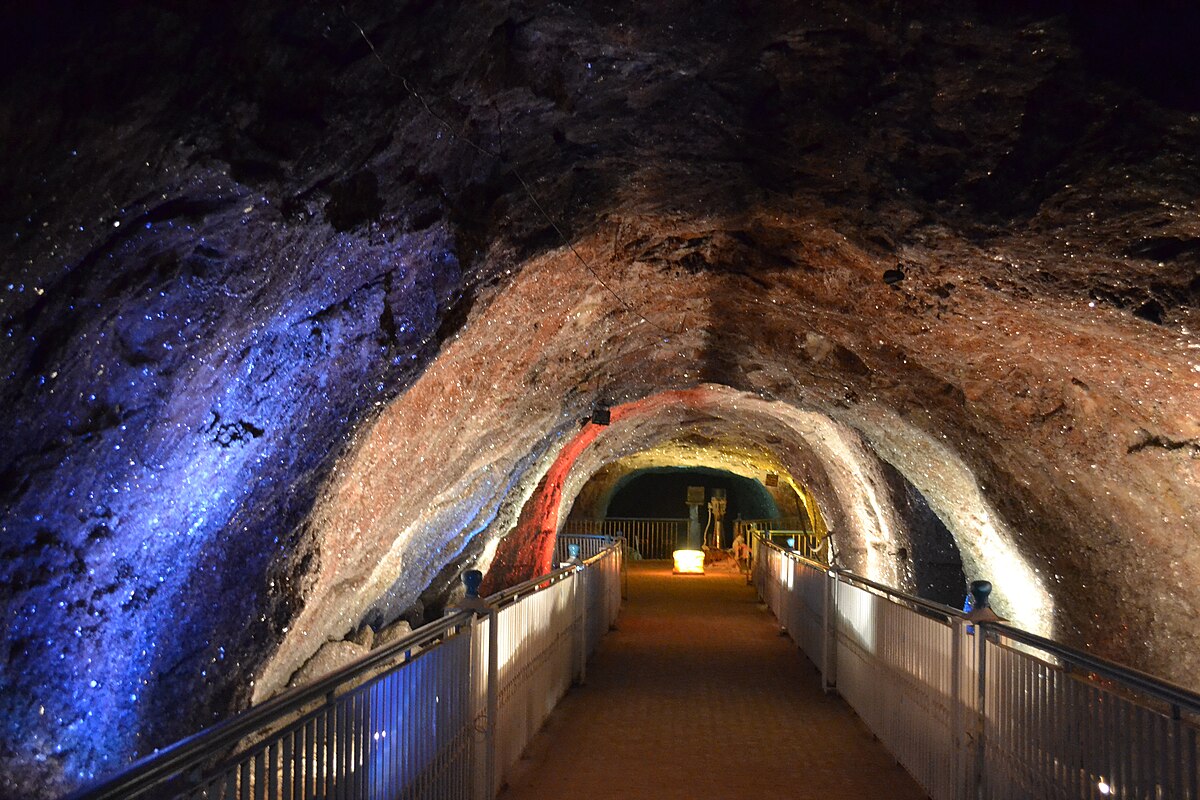 |
| Khewara Salt Mine (Wikimedia) |
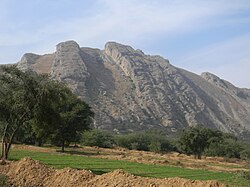 |
| Salt Range in Mianwali district, Punjab, Pakistan (Wikimedia) |
The Indian Salt Industry was an ancient industry. The tax was levied on salt in India since the earliest times and has always been a subject of criticism. Kautilya's Arthashastra, ancient Indian treatise on statecraft, economic policy and military strategy, provides a short account on salt manufacturing process. The salt extraction activity was supervised by "Lavanadhyakasa," an official representing the state during Mauryan empire. Solar evaporation of sea water was carried out in salt pans in coastal regions. The state maintained a system license for manufacturing salt for the fixed fee or tax during this period. During Pallava reign in South India salt industry was monopolized by the state. The Chola emperors in Tamil Nadu showed keen interest in the development of salt industry and encouraged taxation for salt. Hence number of salt pans situated along the eastern coast are referred to in Chola and later Pandya inscriptions. Large quantities of salts were transported through ancient highways.
Salt was produced in the coastal regions of Bengal, Bombay, Rann of Kutch and in inland regions of Rajasthan, Uttar Pradesh and Central India. The British East India Company greatly showed interest in escalating salt tax. In 1835, East India Company imposed special taxes on Indian salt to facilitate its import. Special Taxation paid huge dividends for the traders of the British East India Company. Heavy taxation on salt continued even after the Crown took over the administration of India from the Company in 1858. The Indian public vehemently condemned the stringent salt taxes imposed by the British. The first session of the Indian National Congress held in Bombay in 1885 raised the issue of the salt tax. Number of protests were observed in several parts of the country during 19th and early 20th centuries and this resulted in Mahatma Gandhi's Salt Satyagraha in 1930. Similar Satyagrahas were held in other parts of the country.
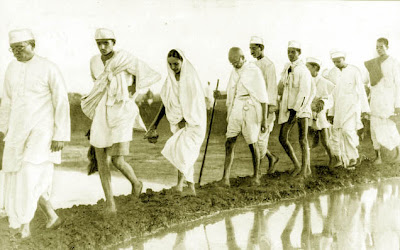 |
| Mahatma Gandhiji's Dandi March Salt Satyagraha |
Salt (உப்பு) in Sangam Literature
It is well known that the Sangam landscape was divided into five tinais (திணை) or five geographical landscapes. The physiographical lay-out of Tamilakam, its flora and fauna, its hills and valleys, rivers and lakes, its deserts and sandy beaches, formed the basis for the habitation of five different group of people. Kurunji (குறிஞ்சி) was the home of Verpan and Kodichi as well as Kuravan and Kurathi; Palai (பாலை) was the home of Vitalai, Kalai, Meeli, Eyinar, Eyirriyar, Maravar and Marathiyar; Mullai (முல்லை) was the home of Kurumporai, Kizhathi, Thondral Manaivi, Idaiyar, Idaichiyar, Ayar, Aychiyar, Kovalar and Pothuvar; Marutham (மருதம்) was the home of Ooran, Makizhnan, Kizhathi, Manaivi, Ulavar, Ulathiyar, Kataiyar, Kataisiyar and Kalamar and Neithal (நெய்தல்) was the home of Serppan, Pulamban, Parathi, Nuzhaichi, Nulaiyar, Nulaichiyar, Parathar, Parathiyar, Alavar and Alathiyar.
Neithal Terrain
Salt is a remarkable thing in human history. Salt served as money at various times and places. As a highly valued item of trade, salt trade routes crisscrossed the globe. It also served as a monetary exchange. The quest for salt has even resulted bitter warfare. In short, salt or common salt, the white granular substance, has been essential to all life, especially with respect to its long and varied history.
 |
| Sangam Landscape in Ancient Tamilakam |
Neithal Terrain
Neithal Tinai corresponds to seashore and adjoining terrains. Blue Water Lily Blue Nelumbo or Kuvalai (குவளை) or Kazhuneer (கழுநீர்) or Neithal (நெய்தல்) flower (Nymphae odorata) is mentioned as the native flower and hence the name Neithal Tinai. Lord Kadalon (a.k.a Varunan) was worshiped by the native people. The Neithal terrain is known for seashore and adjoining coastal land dotted with sand well Crocodile (முதலை), shark (சுறா) and Kara fish (காரா மீன்) were native animal and fish. Sea-crow (நீர்க்காகம்), swan (அன்னம்) and Andril (அன்றில்) were the birds. Kandal (கண்டல்), Punnai (புன்னை), Gnazhal (ஞாழல்) trees occupied their terrain. The native music note of the land was Sevvazhi Note (செவ்வாழி பண்) and the drum used was Navay drum (நாவாய்ப்பறை) and the stringed musical instrument was Vilari Lute (விளரி யாழ்).
The vast, unbroken coastline of Tamilagam was located in Neithal region. The fishermen engaged in fishing from ocean using fishing net. Salt was highly valued and considered as a precious commodity during Sangam period. Womenfolk barter fish and salt and get paddy, meat and wine. Salting and drying the fish took place to preserve seafood. They constructed fishing boats and skilled in surfing the waves. They lived in coastal villages i.e., Pakkam (பாக்கம்) and pattinam (பட்டிணம்).
Ammoovanar (அம்மூவனார்) was a great Tamil poet during Sangam period. He composed 127 poems. Akananuru (அகநானூறு) 6 poems; Ainkurunuru (ஐங்குறு நூறு) 100 poems ie., second hundred on Neithal landscape (நெய்தல் திணை); Kuruntokai (குறுந்தொகை) 11 poems; and Natrinai (நற்றிணை) 10 poets. Of the 127 poems 125 poems composed on neithal tinai (landscape of the sandy coastal terrain) and the other two poem 127 from Kuruntokai (Kurinji tinai) and poem 397 from Natrinai (Palai tinai).
Salt Extraction and Salt Pans during Sangam Period
Ammoovanar (அம்மூவனார்) was a great Tamil poet during Sangam period. He composed 127 poems. Akananuru (அகநானூறு) 6 poems; Ainkurunuru (ஐங்குறு நூறு) 100 poems ie., second hundred on Neithal landscape (நெய்தல் திணை); Kuruntokai (குறுந்தொகை) 11 poems; and Natrinai (நற்றிணை) 10 poets. Of the 127 poems 125 poems composed on neithal tinai (landscape of the sandy coastal terrain) and the other two poem 127 from Kuruntokai (Kurinji tinai) and poem 397 from Natrinai (Palai tinai).
பெருங்கடல் வேட்டத்துச் சிறுகுடிப் பரதவர்
இருங்கழி செறுவின் உழாஅது செய்த
வெண் கல் உப்பின் கொள்ளை சாற்றி
என்றூழ் விடர குன்றம் போகும்
(Akananuru 140, Poet Ammoovanar,)
What the hero said to his friend: She is the loving, innocent daughter of a salt merchant who goes through mountains cracked by the sun’s heat in his fast bullock cart, goading his oxen with a stick, to sell father's white grainy salt, made in the salt pans without plowing, near the seashore in a small settlement of fishermen
உவர் விளை உப்பின் கொள்ளை சாற்றி
அதர் படு பூழிய சேண் புலம் படரும்
ததர் கோல் உமணர் பதி போகு நெடு நெறிக்
கண நிரை வாழ்க்கை தான் நன்று கொல்லோ
(Akananuru 390, Poet Ammoovanar,)
What the hero said to his heart, or What the hero said to his friend: Stating the price of salt grown in saline land, going to far away places with dusty paths, the lives of salt merchants with thick goads must be good when they go on the long paths in groups.
Salt Extraction and Salt Pans during Sangam Period
The salt pan industry was an ancient industry in Sangam period. Neithal people who lived near the sea ventured upon salt production and sale. Salt producers were known as 'Alavars' (அலவர்) and their women as 'Alathiyar.' (அலத்தியர்). They are harvesting salt without plowing. (உவர் விளைவு உப்பின் உழா உழவர். Natrinai 331: 2.) The dark brackish waters produce white salt (இருங்கழிச் செறுவின் வெள் உப்பு விளையும் Natrinai 311:4). The place of salt extraction was known as 'Alams' (அளம்) or Uppalams (உப்பளம்) i.e. uppu (உப்பு) + alam (அளம்). Villages like Kovalam (கோவளம்), Peralam (பேரளம்) etc., got their names due to the presence of salt pans.
Poet Ulochanar (உலோச்சனார்) was a great Tamil poet during Sangam period. He composed 35 poems (Puram 3 and Akam 32). His 31 Akam poems describes about the neithal landscape of the sandy coastal terrain. He has also described about fishermen and fisher-women as well as salt merchants and bartering of salt and fish. In Natrinai poem 354 he describes the process of salt extraction in salt pans and about long rows of wagons that carry salt crystals.
The salt merchants were known as 'Umanars' (உமணர்) and their women as 'Umattiyars' (உமத்தியர்). They traveled with their families with train of bullock carts (நோன்புகட்டுமணர் ஒழிகை Sirupanatruppadai). Their vast caravans were loaded with salt and hawked door to door and village to village. Salt merchants traveled in groups and reached villages to sell their salt.
Bartering System
உப்பு நொடை நெல்லின் மூரல் வெண் சோறு
Akananuru 60:4, Kudavayil Keerathanar,
Poet Ulochanar (உலோச்சனார்) was a great Tamil poet during Sangam period. He composed 35 poems (Puram 3 and Akam 32). His 31 Akam poems describes about the neithal landscape of the sandy coastal terrain. He has also described about fishermen and fisher-women as well as salt merchants and bartering of salt and fish. In Natrinai poem 354 he describes the process of salt extraction in salt pans and about long rows of wagons that carry salt crystals.
கடு வெயில் கொதித்த கல் விளை உப்பு
நெடு நெறி ஒழுகை நிரை செலப் பார்ப்போர்
அளம் போகு ஆகுலம் கடுப்ப
Natrinai 354, Ulochanar,
What the heroine’s friend said to the hero. The uproars of the long rows of wagons that carry salt crystals made by the hot boiling sun in salt pans, near the misty seashore with long sandy stretches of groves.
Ulaochanar's Akananuru poem 20 speaks about the drying of salted fish by fisher-women:
பெரு நீர் அழுவத்து எந்தை தந்த
கொழு மீன் உணங்கல் படு புள் ஓப்பி
எக்கர்ப் புன்னை இன் நிழல் அசைஇ
Akananuru 20: 1-3, Ulochanar, What the heroine’s friend said to her, as the hero listened nearby.Our father gave us fatty fish, that he had caught in the huge ocean, to dry. We rested in the sweet shade of a punnai tree growing in the sand, and chased away the marauding birds.
Umanars (உமணர்கள்)
The salt merchants were known as 'Umanars' (உமணர்) and their women as 'Umattiyars' (உமத்தியர்). They traveled with their families with train of bullock carts (நோன்புகட்டுமணர் ஒழிகை Sirupanatruppadai). Their vast caravans were loaded with salt and hawked door to door and village to village. Salt merchants traveled in groups and reached villages to sell their salt.
ஈங்குப் பிரிந்து உறைதல் இனிதன்று ஆகலின்
அவணதாகப் பொருள் என்று உமணர்
கண நிரை அன்ன பல் கால் குறும்பொறைத்
Akananuru 337, Cheraman Palai Padiya Perunkadunko,
What the hero said to his heart: You brought me alone to the harsh path, where small boulders are like rows of salt merchants’ donkeys that carry load,
Salt merchants traveled with their families in trains of carts.
கொழுஞ்சூட்டு அருந்திய திருந்து நிலை ஆரத்து
முழவின் அன்ன முழுமர உருளி
எழூஉப் புணர்ந்தன்ன பரூஉக்கை நோன் பார்
மாரிக் குன்றம் மழை சுமந்தன்ன
ஆரை வேய்ந்த அறைவாய்ச் சகடம்
வேழம் காவலர் குரம்பை ஏய்ப்பக்
கோழி சேக்கும் கூடுடைப் புதவின்
முளை எயிற்று இரும்பிடி முழந்தாள் ஏய்க்கும்
துளை அரைச் சீறுரல் தூங்கத் தூக்கி
நாடக மகளிர் ஆடுகளத்து எடுத்த
விசி வீங்கு இன் இயம் கடுப்பக் கயிறு பிணித்து
காடி வைத்த கலனுடை மூக்கின்
மகவுடை மகடூஉப் பகடு புறம் துரப்ப
கோட்டு இணர் வேம்பின் ஏட்டு இலை மிடைந்த
படலைக் கண்ணிப் பருஏர் எறுழ்த் திணிதோள்
முடலை யாக்கை முழு வலி மாக்கள்
சிறு துளைக் கொடுநுகம் நெறிபட நிரைத்த
பெருங் கயிற்று ஒழுகை மருங்கில் காப்ப
சில்பத உணவின் கொள்ளை சாற்றி
பல் எருத்து உமணர் பதி போகு நெடு நெறி
(Perumpanatruppadai line 46-65, Poet Nallur Nathathanar. The King Oyman Nalliyakodan)
The Long Path that Salt Merchants take: The wagons of salt merchants have wheel rims which surround perfectly placed spokes, massive wheel hubs made from huge trees, thick, strong wooden axle bars appearing like two fortress gate cross bars united, roofs woven with grass looking like rain clouds carried by the mountains during monsoons, and cages for domestic fowl resembling the huts of guards who protect fields against elephants.
In a wagon, there is a small mortar with holes in the shape of the knees of a cow elephant with tusks like the sprouts of bamboo, that dangles from the cart near the cage.
The salt merchant’s wife, holding her child, is seated on a pickle pot circled with ropes, that resembles the legs of female elephants whose tusks appear like bamboo sprouts, and also resembles the sweet, small drums with holes that are tied with ropes and played when drama actresses dance in dancing arenas.
She hits the oxen on their back and drives the cart, and strong men with thick shoulders and firm bodies wearing garlands made with fine leaves of neem trees with clusters of flowers on branches, walk near the cart with curved yoke with small holes tied properly with large ropes, calling out the price of salt, in the long path that takes the salt merchants owning many bulls, to many towns.
நறவுவாய் உறைக்கும் நாகு முதிர் நுணவத்து
அறைவாய்க் குறுந்துணி அயில் உளி பொருத
கை புனை செப்பம் கடைந்த மார்பின்
செய்பூங் கண்ணி செவி முதல் திருத்தி
நோன் பகட்டு உமணர் ஒழுகையொடு வந்த
மகாஅர் அன்ன மந்தி மடவோர்
நகாஅர் அன்ன நளி நீர் முத்தம்
வாள் வாய் எருந்தின் வயிற்றகத்து அடக்கி
தோள் புற மறைக்கும் நல்கூர் நுசுப்பின்
உளர் இயல் ஐம்பால் உமட்டியர் ஈன்ற
கிளர் பூண் புதல்வரொடு கிலுகிலி ஆடும்
Sirupanatruppadai line 55 - 61, Poet Nallur Nathathanar. The King is Oyman Nalliyakodan
On a wagon pulled by strong oxen, owned by a salt merchant, wearing on his chest a fine garland, carved with an iron chisel from wood pieces from a delicate nunavan tree. A female monkey that is like his daughter plays with a shell rattle stuffed with lovely pearls resembling the teeth of tender women. Its opening a thin slit as narrow as a sword’s sharp edge. His sons wear bright jewels, and their mother, the wife of the salt merchant, is pretty with a delicate waist and swaying five-part braid that hides her back.
உமணர் சேர்ந்து கழிந்த மருங்கின் அகன்தலை
ஊர் பாழ்த்தன்ன ஓமையம் பெருங்காடு
(Kuruntokai 337, Cheraman Palai Padiya Perunkadunko,)
What the heroine’s friend said to the hero: Lord, if you say that it is painful to be in the vast wasteland with huge ōmai forests, resembling large desolate towns where salt merchants join together and leave,
நீரும் புல்லும் ஈயாது உமணர்
யாரும் இல் ஒரு சிறை முடத்தொடு துறந்த
வாழா வான் பகடு ஏய்ப்பத் தெறுவர்
Purananuru 307, Poet Unknown
Like a lame bull abandoned by salt merchants and unable to live without water and grass, he attacked his enemies and took their lives.
- ஓங்கித் தோன்றும் உமண் பொலி சிறுகுடி
Natrinai 374: 2, Vanparanar
There is a small village with salt merchants, which appears to be tall
உவர் விளை உப்பின் உழாஅ உழவர்
ஒழுகை உமணர் வரு பதம் நோக்கி
கானல் இட்ட காவற் குப்பை
புலவு மீன் உணங்கல் படு புள் ஓப்பி
மட நோக்கு ஆயமொடு உடன் ஊர்பு ஏறி
எந்தை திமில் இது நுந்தை திமில் என
வளை நீர் வேட்டம் போகிய கிளைஞர்
திண் திமில் எண்ணும் தண் கடற் சேர்ப்ப
Natrinai 331: 1-8, Ulochanar
Oh lord of the seashore! When salt merchants come to the seashore and sell heaps of salt that is harvested without plowing, delicate-looking young girls who play with their friends as they dry fish and chase birds, climb on the boats on the shore and say, “This is my father’s boat,” “This is your father’s boat,” and count the sturdy boats of their relatives who went fishing in the ocean.
Spatial variations in food production and consumption practices have been noted for thousands of years. Bartering was introduced by Mesopotamia tribes and has been around Sangam period. A barter system, dates all the way back to 6000 B.C., is an old method of exchange. The Sangam people had brisk internal trade. The wholesalers, retailers and hawkers had indulged themselves in brisk trade. Salt was the most popular item exchanged by several civilizations. Sangam people utilized the bartering system to get their food and spiced they needed. Paddy, produced in abundance in South India, was the common medium of exchange.
In the beginning of the Sangam Age, the barter system of trade was followed. Generally, the people exchanged their commodities with their neighbors. For example, the people of Kurinji region exchanged honey with the people of Neithal region for getting fish and salt. Likewise, the Mullai people gave their milk products to Marudham people to get rice from them.
தேனெய்யொடு கிழங்கு மாறியோர்
மீன் நெய்யொடு நறவு மறுகவும்
தீங் கரும்போடு அவல் வகுத்தோர்
மான் குறையொடு மது மறுகவும்
P orunaratruppadai 214 - 217
People barter honey and yams for fish oil and toddy. Those who sell sweet sugarcane and portions of flattened rice, barter
திமிலோன் தந்த கடுங்கண் வயமீன்
தழை அணி அல்குல் செல்வத் தங்கையர்
விழவு அயர் மறுகின் விலை எனப் பகரும்
Akananuru 320, Mathurai Koolavanikan Seethalai Sathanar,
What the heroine’s friend said to the hero The fishermen ride their boats on tall waves in the wide ocean and pull their nets with fierce strong fish, which their rich younger sisters with leaf skirts on their loins sell, calling out prices, on the streets with festivals, in a beautiful village with groves!
மான்ற மாலை மகிழ்ந்த பரதவர்
இனிது பெறு பெரு மீன் எளிதினின் மாறி
Natrinai 239, Kundriyanar,
What the heroine’s friend said to her, as the hero listened nearby Happy fishermen sell their big fish that they caught happily at this confusing evening time. This is a beautiful, small village where crabs play in stinking sand, in the front yards of houses.
பசு மீன் நொடுத்த வெண்ணெல் மாஅத்
தயிர் மிதி மிதவை ஆர்த்துவம் நினக்கே
Akananuru 340, Nakkeeranar,
What the heroine’s friend said to the hero We will feed you gruel made with soft curds mixed with flour from white rice that we got selling fresh fish
Poet Ammoovanar describes in Akahanuru poem 140 about an young women who carried head loads of salt and exchanged for paddy from peasant woman. She shouted Young women also carried head loads of salt and exchanged for paddy from peasant woman.
கதழ்கோல் உமணர் காதல் மடமகள்
சில்கோல் எல்வளை தெளிர்ப்ப வீசி
நெல்லின் நேரே வெண்கல் உப்பெனச்
சேரிவிலை மாறு கூறலின்.
Akananuru 140: 5 - 8, Ammoovanar,
What the hero said to his friend: She walks through the settlement with salt, swaying her hands, jingling her round, bright bangles and shouting, “equal measure of white grainy salt for rice paddy! (சேரி - street; விலைமாறு - Barter)
நெல்லும் உப்பும் நேரே ஊரீர்
கொள்ளீரோ எனச் சேரி தொறும் நுவலும்
Akananuru 390: 8 - 9, Ammoovanar,
What the hero said to his heart, or What the hero said to his friend: Salt merchant's girl went to all the settlements and called out, “Town people! Rice for salt, straight exchange! Will you barter?”
உப்பு நொடை நெல்லின் மூரல் வெண் சோறு
Akananuru 60:4, Kudavayil Keerathanar,
What the heroine’s friend said to the hero, She brings food, white rice she got from bartering salt.
In Pattinappalai poet Kadiyalur Urithirankannanar describes the sturdy boats of salt merchants sailed in backwaters and they carried paddy. The paddy was obtained by salt merchants by bartering salt.,.
குறும்பல்லூர் நெடுஞ்சோணாட்டு
வெள்ளை உப்பின் கொள்ளை சாற்றி
நெல்லொடு வந்த வல்வாய்ப் பஃறி
பணை நிலைப் புரவியின் அணை முதல் பிணிக்கும்
Pattinappalai 28 - 31, Poet Kadiyalur Urithirankannanar, King Cholan Karikalan
Gardens and Groves of Kaviripoompattinam: In the huge Chola country with many small towns, sturdy boats with paddy got by bartering salt, are tied to posts on the shores of the backwaters, like horses tied in a stable.
உமணர் தந்த உப்பு நொடை நெல்லின்
அயினி மா இன்று அருந்த
Natrinai 254, Ulochanar
What the heroine’s friend said to the hero: If you stay, your horses can eat the rice from paddy the salt merchants got selling their salt
அயினி மா இன்று அருந்த
Natrinai 254, Ulochanar
What the heroine’s friend said to the hero: If you stay, your horses can eat the rice from paddy the salt merchants got selling their salt
Salt is a remarkable thing in human history. Salt served as money at various times and places. As a highly valued item of trade, salt trade routes crisscrossed the globe. It also served as a monetary exchange. The quest for salt has even resulted bitter warfare. In short, salt or common salt, the white granular substance, has been essential to all life, especially with respect to its long and varied history.
Reference
- A brief and fascinating history of salt. http://beyondtheshaker.com/pages/salt-guide/salt-guide-history.html
- A contribution to the history of common salt. https://www.ncbi.nlm.nih.gov/pubmed/9185119/
- History of Ancient Salt https://thegreenlivingcenter.com/node/134
- Europe's 'oldest prehistoric town' unearthed in Bulgaria http://www.bbc.com/news/world-europe-20156681
- History of Salt http://smartsalt.rsconsulting.fi/history-of-salt.html
- Saharan salt caravans ply ancient route http://www.reuters.com/article/us-mauritania-caravan-idUSL162118220070221
- Salary: Salt Money https://etymology.quora.com/Salary-Salt-Money
- Salina Turda Wikipedia
- Salt http://www.etymonline.com/index.php?term=SALT
- Salt https://en.wiktionary.org/wiki/salt
- Salt, the ancient food preserver. https://collegekitchenscience.wordpress.com/tag/sodium-chloride/
- Sodium chloride Formula - Sodium chloride Uses, Properties, Structure and Formula http://www.softschools.com/formulas/chemistry/sodium_chloride_uses_properties_structure_formula/255/
- Tuzla Wikipedia
- What is Sodium Chloride? - Definition, Structure & Formula http://study.com/academy/lesson/what-is-sodium-chloride-definition-structure-formula.html
- What is the origin of the hindi phrase "Namak-haram" or "namak-halal"? https://www.quora.com/What-is-the-origin-of-the-hindi-phrase-Namak-haram-or-namak-halal
- உப்புத் தொழில் – அம்மா உப்பை முன்வைத்து ஒரு பார்வை http://www.vinavu.com/2014/06/12/amma-salt-and-salt-industry-in-india/
- சங்க இலக்கியங்கள் காட்டும் உமணர் வாழ்வியல் கு. ஜீவாலட்சுமி http://www.muthukamalam.com/essay/literature/p102.html
- சங்க இலக்கியத்தில் பரதவர்கள் http://www.heritagevembaru.org/2016/02/blog-post_17.html
- சங்க இலக்கிய பிரதிகளின் காலம்‹- பழந்தொழில்கள் - சார்தரவுகள். வீ.அரசு http://keetru.com/index.php/2010-06-24-04-31-11/1659-2013-sp-142/25619-2013-11-28-10-30-34
- பரமசிவன், தொ. பண்பாட்டு அசைவுகள். காலச்சுவடு. 2010. ரூ 200.00.
